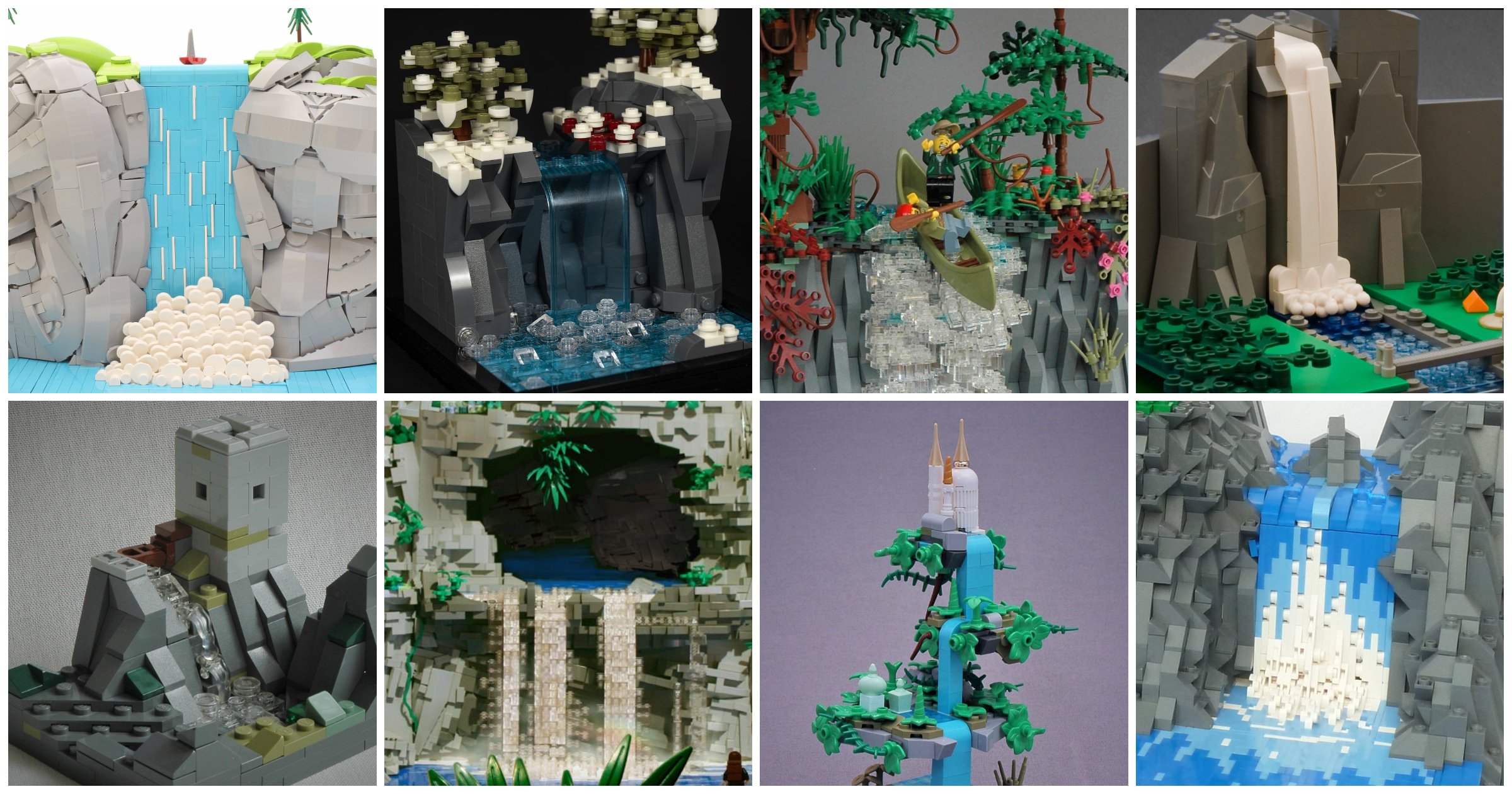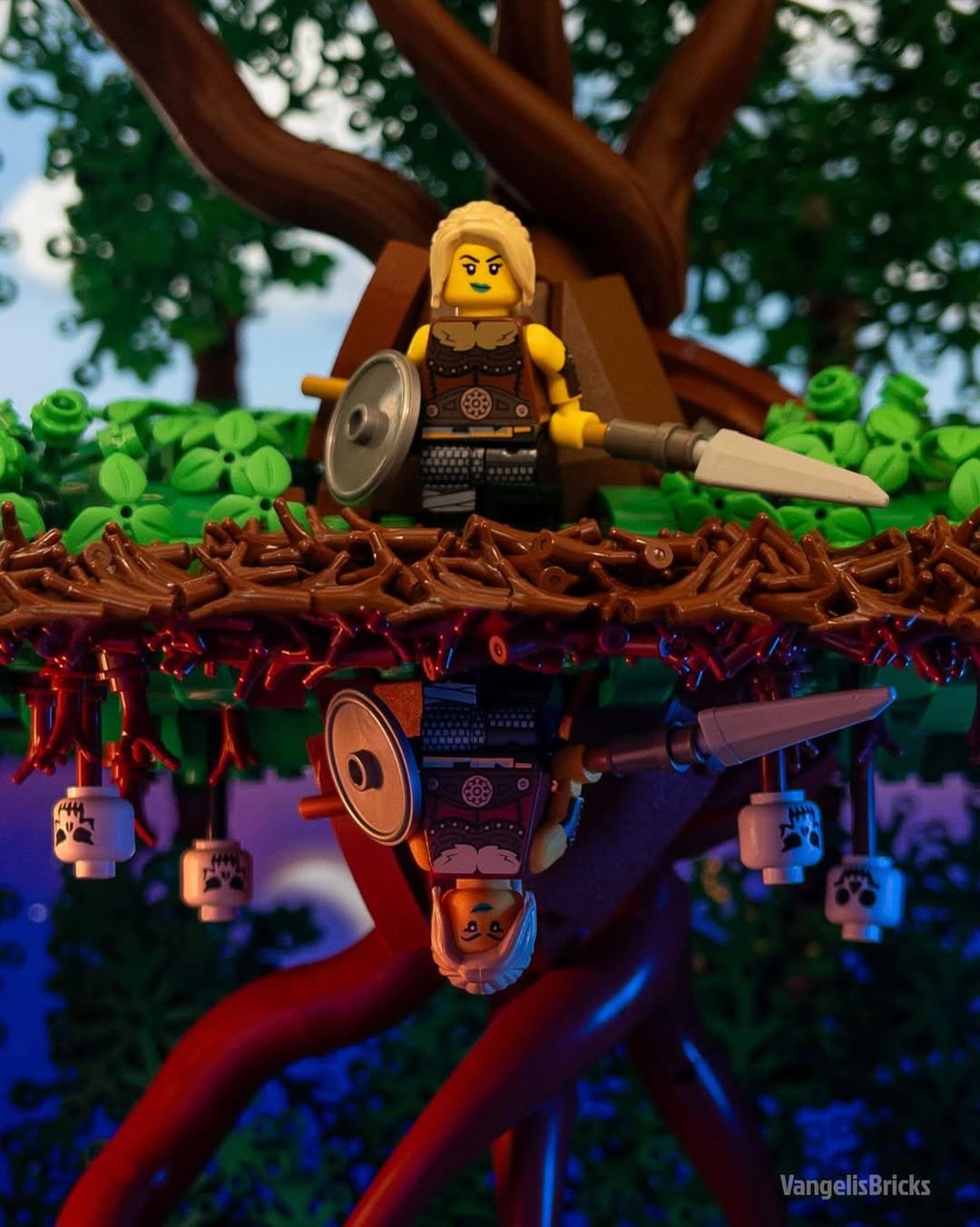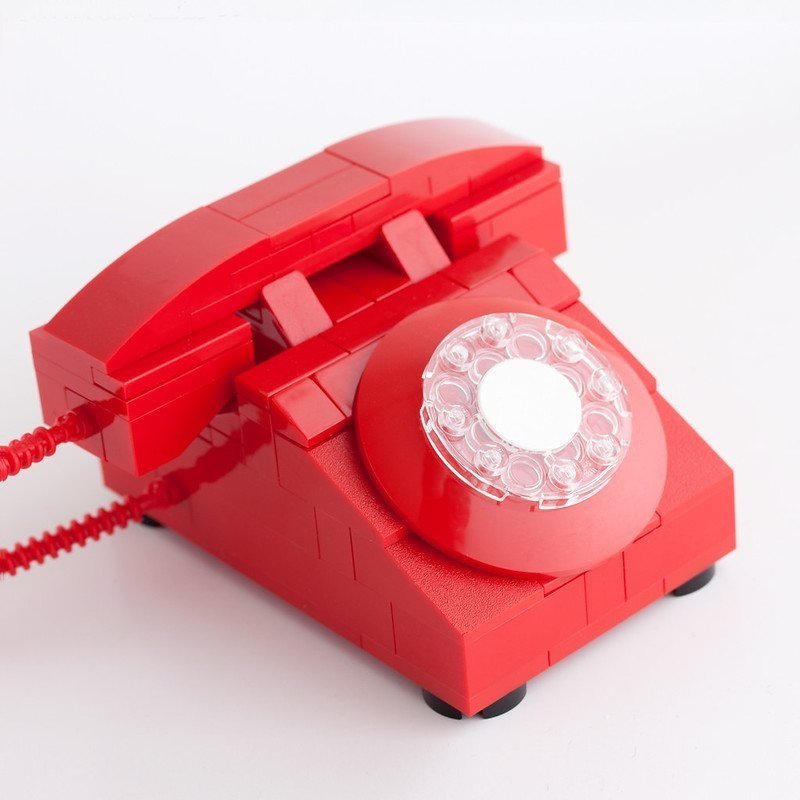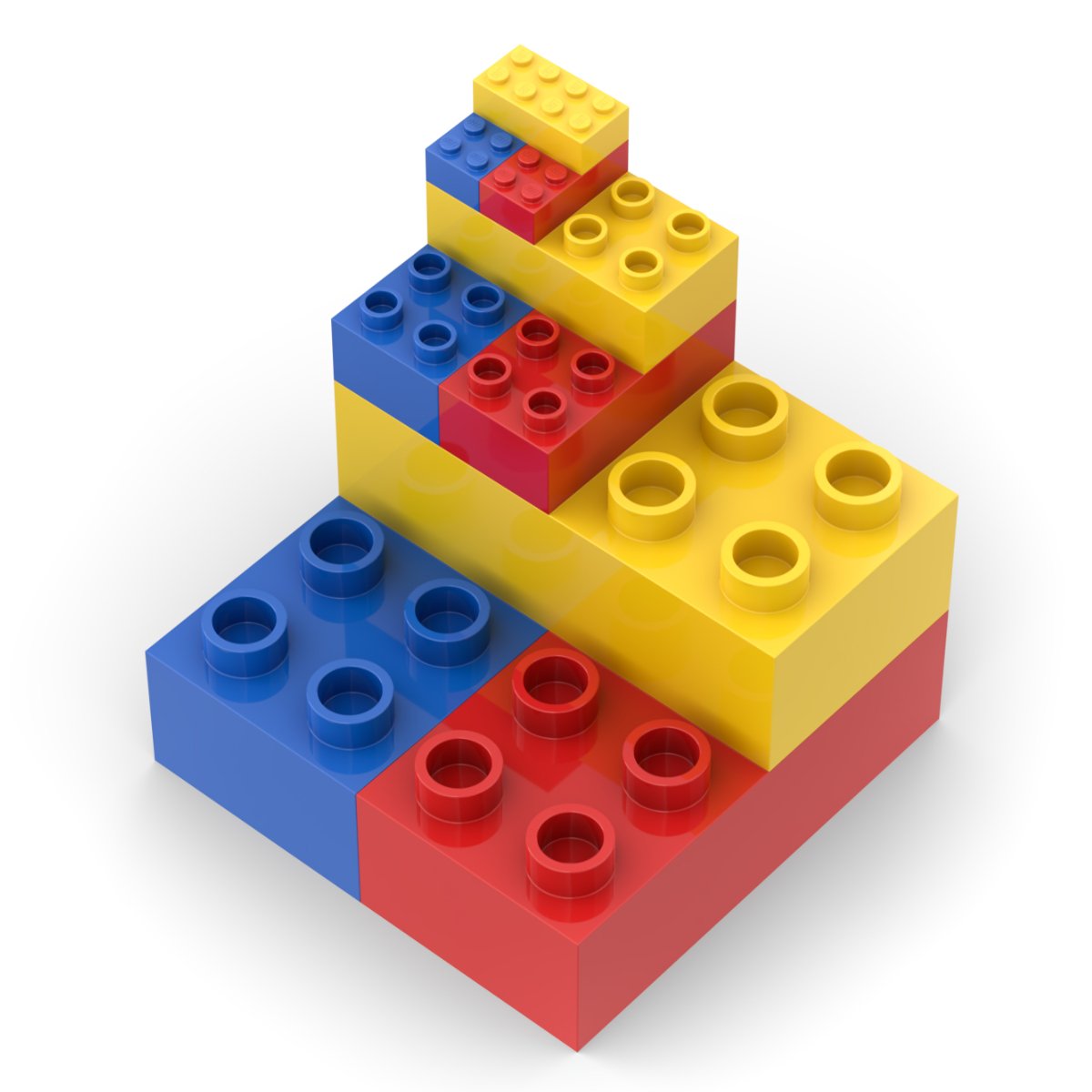LEGO Waterfall Techniques: Don't Go Chasing Them, We've Done That For You!
/Best of BrickNerd - Article originally published August 9, 2022.
Welcome back everyone, time for another technique spotlight! Today I wanted to share with you a few different examples of LEGO waterfalls that I found browsing through the AFOL community. There is something about waterfalls that just makes people happy, whether it be in real life or in the form of interlocking plastic bricks. I’ve made a few myself over the years, and if you haven’t yet tried it yourself, I can highly recommend you do so.
As with most things, there are a lot of different ways to create a beautiful waterfall. I’ve tried to group the different types of techniques below and showcase some different versions and scales that people have used over the years. So let’s get to it!
Curved Slopes Are Awesome
First off, we have a fairly simple technique that uses curved slopes as a way to create the impression of a smooth stream of water flowing off a cliff. The same technique was used in the “Everyone is Awesome“ set that LEGO released not too long ago. It’s a very simple way to create a sense of motion and uses fairly common pieces that usually come in a lot of different colours. Below, I used it for a micro-build depicting some floating islands. As the curved slopes are attached to bricks, it does offer a fair bit of stability (which is something I otherwise usually try to avoid at all costs…).
The set released by LEGO themselves uses some larger curved slopes, but achieves the same wonderful effect of flowing colours, just like a waterfall.
BrickNerd’s own M.C. Escher expert Simon has made this wonderful rainbow waterfall using the same technique (as well as some first-grade photography) to re-create this masterpiece.
This amazing depiction of a small forest waterfall is brought to us by Eli. It’s a slight twist on the examples shown above, with the large curved slope attached to plates and tiles at the bottom (and to bricks up top). He also added a bit more detail by using SNOT for the water churning below, which really brings the whole waterfall to life (plus, you can never go wrong with a few white croissants).
Speaking of SNOT
A different version of the curved slope technique is this one by David Leest. By using a few more slopes, as well as placing them offset from each other, you get a more vivid-looking waterfall. It also helps to add some rounded plates in white and trans-clear to illustrate the foam created by a real waterfall and thus further emphasize the motion that is going on in the build. Using SNOT to have flowing water represented by plates on their sides, this time in different shades of blue mixed with white, really adds to the realism of this build. The builder graciously made a tutorial for this build which you can find here.
This build by Simon Küntzel takes SNOTTING to another level when it comes to waterfalls. He not only uses that technique for the water at the bottom but also for most of the flowing water in the falling part too. By mixing in wedge plates, he is able to achieve a great transition between the two sections. There is also some pretty sweet rockwork going on in this build but we’ll save that for another day.
Microscale Needs Waterfalls Too
Moving along to something a lot less piece-intense, we have this tiny fortress by yours truly. The reason behind this build is that I really wanted to use the (then rather new) power blast pieces that came with the Frozone CMF minifigure. The shape of that piece is just perfect for tiny waterfalls so it was fun to try to incorporate it into a build.
Below you can see another lovely microscale waterfall by another BrickNerd contributor Ted Andes. It’s another example of using curved slopes, this time some really long ones, together with tooth-plates, ice cream pieces, and a few rounded tiles
If we’re going for microscale we might as well go reeeally micro. Like in this build by John Snyder using blue rubber bands. To create water with some structure/motion at this scale takes some real ingenuity, something John has in abundance no doubt—almost like he has a leg up on the competition!
The Classics
Going up in scale quite a bit, we have a few examples of more “classic“ waterfalls. Mainly using trans-clear pieces, you can often get a very life-like result.
In this build by Joshua Brooks, trans-clear plates facing outwards create a simple but very nice waterfall. At the bottom of the waterfall, there is a mix of trans-clear cheese slopes and plates, together with jewels to simulate water.
Here is another example of using trans-clear plates facing outwards, this time by castle-builder extraordinaire Jonas Wide. I just love the way these tiny waterfalls look, and as someone who’s seen this build in person, I can assure you it looks even better up close.
While we’re in the jungle we might as well check out this gorgeous cave and waterfall by Mark Kelso. This build was published way back in 2008 (you know, when the iPhone 2 was about to be released)! I guess classics are classics for a reason.
Something a bit more recent is this beauty from (yet another BrickNerd contributor—I promise I am not playing favorites) Garmadon. The mix of tiles and plates in white and trans-clear creates an amazing looking waterfall that really elevates the whole scene.
If you for some reason don’t happened to have a thousand or so trans-clear plates lying around, there is a very nice shortcut to creating a beautiful flowing waterfall. Just do what LionBricks did and use a panel with curved top. This is a very simple, yet effective, way to get a nice waterfall in even a small MOC.
Churning for Clarity
Ben Pitchford has created these stunning waterfalls using a very simple technique of stacking 1x2 trans-clear plates. It’s a rather piece-consuming technique, but the result is just awesome. It’s hard to create a more realistic waterfall than this in my opinion.
I may be a bit biased as I’ve used the same technique in this build, but I do really like the sense of motion you get when building like this. To save some pieces you can also incorporate some 1x2 bricks for stability in the back and then just cover most of them with plates. Using only bricks takes away a bit of the “foaming“ feeling you get with the trans-clear plates, so if you have enough I’d recommend sticking to just plates.
Yet another stunning example using this technique is this build from ‘Torgar. The waterfalls use a mix of stacked plates and cheese slopes in trans-clear, which really adds to the whole scene.
Moving It Up a Notch
Of course, we can’t have a spotlight on waterfalls without showing you some motorized ones. This one from Tim was made as a part of a Eurobricks-collab and showcased at Brickworld 2022. I highly recommend having a look at the video as the effect is quite spectacular.
There is also this video that shows a working waterfall that was made by LEGOParadise, as part of the Bricklink Designer Program. It uses a conveyor belt with plates and tiles to simulate the flowing water and also has a pretty spectacular-looking water splash at the bottom.
Or you could hurl LEGO studs off a cliff and make a literal waterfall like Kevin Darke did. (Though how the mechanism doesn’t get jammed all the time, we watch in stunned silence!)
A Little Bit of Everything
As always, I love going out on a high note so I saved this beauty from Grant Davis for last. It uses a variety of techniques to create a truly masterful waterfall. You got the curved slopes up top, you got the snotted waterfall with window panes, not to mention some of the most impressive rockwork ever created. But again, we’ll save that for a later time…
Thanks a lot for stopping by, I really hope you enjoyed this spotlight and hopefully you find it useful the next time you feel like adding a LEGO waterfall to your upcoming MOC.
Did we miss any LEGO waterfalls that you love? Leave your thoughts in the comments below.
Do you want to help BrickNerd continue publishing articles like this one? Become a top patron like Charlie Stephens, Marc & Liz Puleo, Paige Mueller, Rob Klingberg from Brickstuff, John & Joshua Hanlon from Beyond the Brick, Megan Lum, Andy Price, John A., Lukas Kurth from StoneWars, Wayne Tyler, LeAnna Taylor, Monica Innis, and Dan Church to show your support, get early access, exclusive swag and more.






































